Saving the ‘soul of a community’: UK Land-grant Engagement program preserves arts, culture through disaster preparedness
Saving the ‘soul of a community’: UK Land-grant Engagement program preserves arts, culture through disaster preparedness
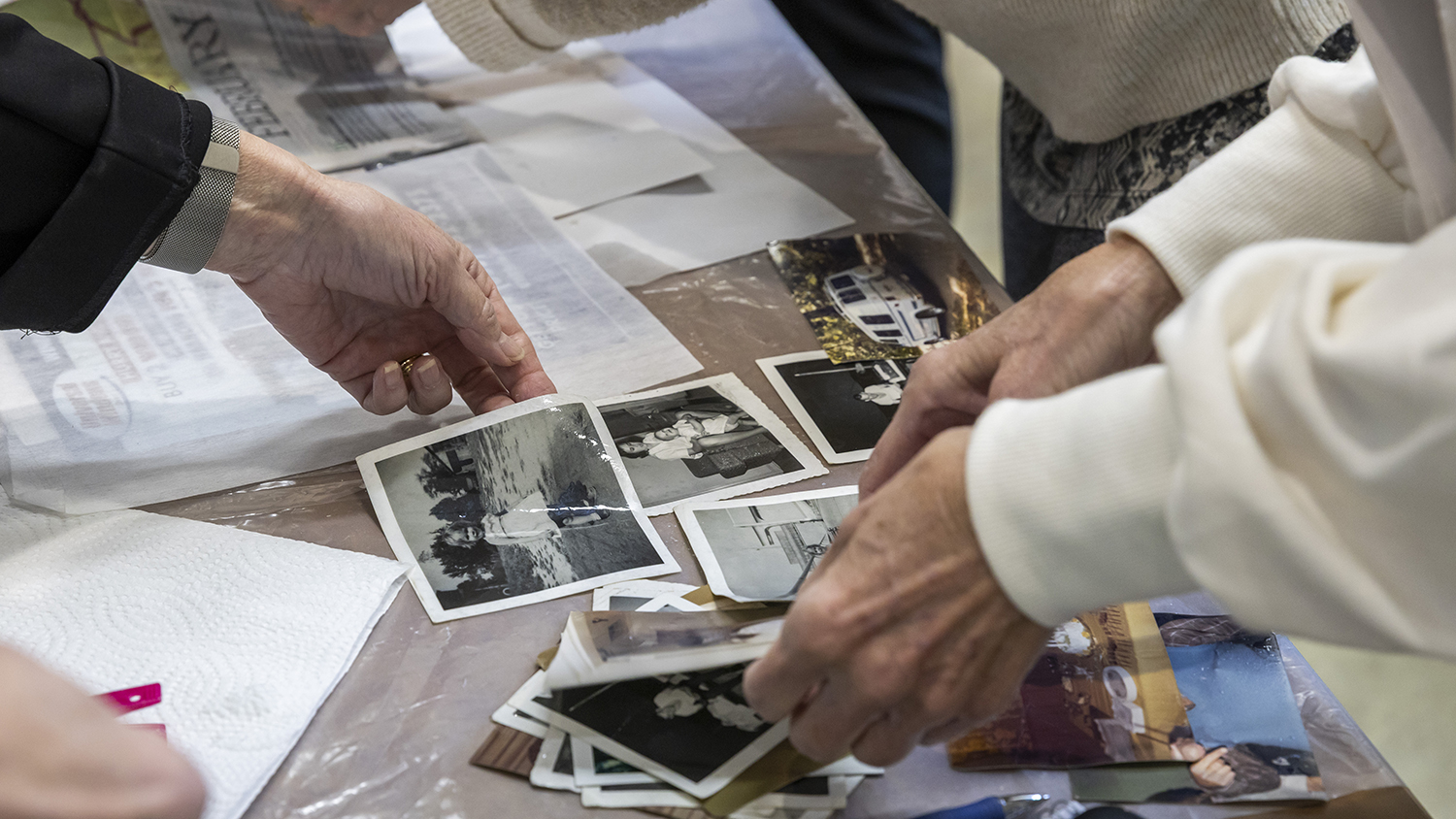

When natural disasters strike—floods, tornadoes or fires—the damage is measured not just in infrastructure lost, but in the cultural memory that vanishes alongside it. Photographs, handmade quilts, historical archives and community art installations often represent the soul of a place and tell a profound story. In Kentucky, a unique partnership is working to protect that story.
Through a groundbreaking initiative led by the University of Kentucky, arts preparedness is emerging as a pillar of land-grant engagement. This collaborative effort unites Kentucky Community Arts Extension, part of the UK Cooperative Extension Service, with the Department of Arts Administration in the UK College of Fine Arts, fostering a powerful alliance to equip arts and cultural organizations with essential tools for emergency planning and disaster response.
In 2024, the UK Office of Land-grant Engagement announced funding for multiple projects, focusing on community engagement. The goal was to expand collaborative efforts between UK and partners across the Commonwealth while addressing important public needs. The Arts Preparedness in Kentucky was one of the nine projects selected.
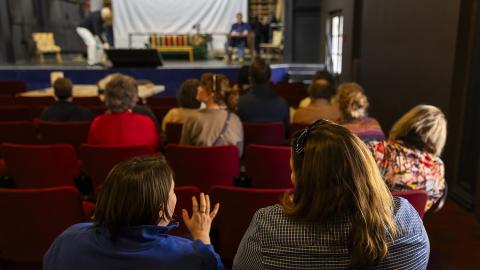
Connecting arts and emergency response
“After a disaster, people go back to find what is left,” said Melissa Bond, extension director for Community Arts and Economic Development with Blueprint Kentucky (formerly CEDIK). “The photos and heirlooms are what they try to find first. We all have something precious.”
Following several devastating natural disasters in Kentucky in 2021 and 2022, Bond envisioned the need for a statewide cultural heritage disaster response network.
She teamed up with Ruth Bryan, professor and archivist for UK Libraries, Leah Hamilton, assistant professor and arts emergency specialist in the UK College of Fine Arts, and several Kentucky arts organizations to launch the Kentucky Heritage Emergency Response Network (KHERN). Together, they formed a coordinated group that connects local needs with national expertise, delivering hands-on recovery assistance, actionable preparedness training and vital resources for artists, cultural institutions and community members alike.
“Arts and culture represent the soul of a community,” Hamilton said. “We currently have an environment locally, state and nationally where emergency management frameworks don't necessarily consider the role of arts and culture in disaster preparedness, in response and recovery.”
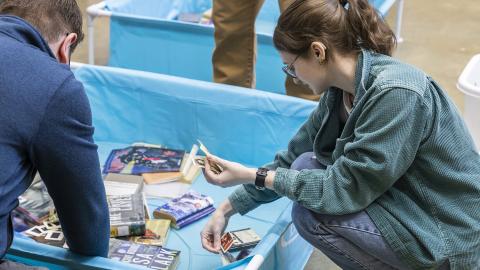
The vision behind KHERN led to the Arts Emergency Preparedness in Kentucky program. KHERN experts provide real-time coordination and on-site support during emergencies, enhancing the program’s responsiveness. Several arts disaster relief resources are provided through the College of Fine Arts website, including an open-access emergency management resource guide developed by UK Libraries.
Extension offices: trusted community anchors
According to Hamilton and Bond, the success of KHERN and the Arts Preparedness program lies in its deep connection to Kentucky’s county-level Cooperative Extension infrastructure. These offices—one in every county—serve as trusted hubs with long-standing relationships within their local communities. Eight of those counties have a dedicated community arts agent focused on leveraging arts and culture to provide local community economic development.
“The infrastructure of extension is what’s bringing national attention to KHERN,” said Hamilton. “Offices have built trusted relationships with their communities. Extension lets us ask, ‘What are your needs?’ and respond meaningfully.”
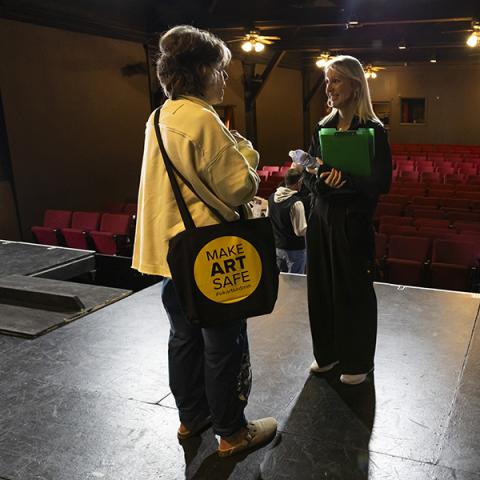
A day-long training was hosted in Boone County for regional arts and media professionals interested in enhancing the security of their business. University, extension and KHERN experts guided the cultural organizations through risk assessments and storage strategies, helping communities prepare for a crisis before it strikes.
Another event was hosted in Paducah, which has experienced recent tornadoes and flooding. The Western Kentucky workshop offered hands-on demonstrations that showed how to salvage water-damaged photos, textiles, books and heirlooms.
A planning workshop focused on emergency preparedness for community events and festivals was recently held at the Greenup County Extension Office. The workshop included a panel discussion of local emergency management and event planning professionals, as well as a tour of Greenup County Public Safety's Incident Command Post RV. The afternoon session equipped attendees with a practical workbook, resources and knowledge to implement safety and security strategies for their event.
“They really wanted preparedness,” Bond said of the feedback she received from the workshops. “Many said it was the first time they had connected with their extension office, giving Extension the opportunity to follow up with additional services.”
Hamilton, who coordinates the undergraduate and graduate arts emergency management certificate programs at UK, is taking these initiatives to the classroom. At the Whitley County Earth Day Festival, her students partnered with Bond and the community arts extension agent to work on emergency and safety planning for the event. Tree giveaways, hands-on activities and a bounce house helped draw families to the event that included a presentation about weather safety by the National Weather Service.
“By integrating some preparedness steps—even passively—we help communities become safer without compromising celebration,” Hamilton said.
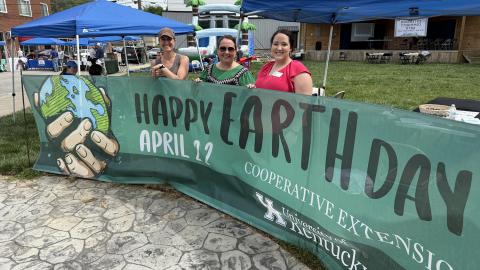
National recognition and a forward-looking vision
After receiving $20,000 from the UK Office of Land-grant Engagement and attracting $90,000 in combined funding from the National Endowment for the Arts and the Performing Arts Readiness project, KHERN is now formally recognized by the Alliance for Response and Kentucky’s Incident Management Team. The network was officially launched during UK’s Arts Emergency Management Conference last year, drawing national partners including FEMA, the Smithsonian and the National Endowment for the Arts.
Still, Hamilton emphasizes that the network must stay true to its roots.
“I really don't want to get so formal that we don’t continue to serve like a mutual aid style network.”
Her vision is that trained artists and conservators are deployed like first responders—whether to lead story circles, restore murals, salvage archives or provide creative refuge.
“This is my dream,” Hamilton said. “That we can pay these people for their specialized knowledge and take them immediately into communities to do that work.”
Land-grant Engagement in action
Arts emergency preparedness, through its multi-departmental and organizational collaboration, reflects the evolving role of land-grant universities in disaster recovery, cultural preservation and community development.
Kentucky’s Community Arts Extension program is the largest in the nation, housed within a land-grant university's Cooperative Extension system. Led by Bond, the program places arts agents in eight counties to spearhead creative placemaking, arts education, and cultural recovery initiatives. It’s a model that other states are now watching closely.
Extension agents and university faculty are building partnerships across colleges and sectors—from arts and libraries to emergency management and public health.
From salvaging family treasures to training artists and archivists for emergency response, Kentucky’s arts emergency preparedness initiative demonstrates the full spectrum of land-grant engagement—rooted in service, powered by collaboration and united by the stories communities cannot afford to lose.
For more information and resources, visit https://blueprintkentucky.ca.uky.edu/arts-disaster-recovery.
To find out more about how National Endowment for the Arts grants impact individuals and communities, visit www.arts.gov.
###
Writer: Jennifer Elwell
The Martin-Gatton College of Agriculture, Food and Environment is an Equal Opportunity Organization with respect to education and employment and authorization to provide research, education information and other services to individuals and institutions that provide equal opportunities for qualified persons in all aspects of institutional operations and do not discriminate on the basis of race, color, national origin, ethnic origin, religion, creed, age, physical or mental disability, veteran status, uniformed service, political belief, sex, sexual orientation, gender identity, gender expression, pregnancy, marital status, genetic information or social or economic status.
As the state’s flagship, land-grant institution, the University of Kentucky exists to advance the Commonwealth. We do that by preparing the next generation of leaders — placing students at the heart of everything we do — and transforming the lives of Kentuckians through education, research and creative work, service and health care. We pride ourselves on being a catalyst for breakthroughs and a force for healing, a place where ingenuity unfolds. It's all made possible by our people — visionaries, disruptors and pioneers — who make up 200 academic programs, a $476.5 million research and development enterprise and a world-class medical center, all on one campus.
Blueprint Kentucky Extension Land-grant Engagement
